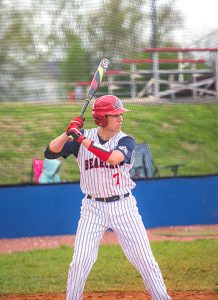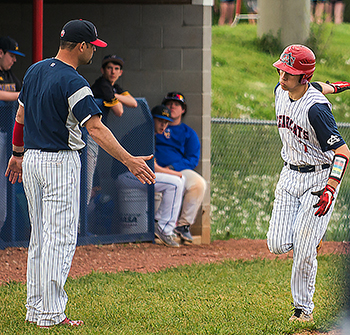
David Richardson, National Comfort Institute, Inc.
As I write this, my oldest son is finishing up his senior year of high school baseball. The memories my family has and the life lessons he learned from the game will always have a special place in my heart. There are also valuable lessons Performance-Based Contractors’ can learn from the game of baseball.
Ted Williams, one of the greatest sluggers in the sport, once said that the hardest thing to do is squarely hit a round baseball with a round bat. Hitting a baseball appears to be physically impossible; yet each season players consistently hit that ball. Is this luck or is there a repeatable method to achieve this feat?
The discipline and art of hitting a baseball is achieved through practice, patience, and self-belief. Successful HVAC system performance measurements incorporate these same abilities. Those who are willing to understand the principles, learn the skills, and invest the time to practice, can excel at producing measurable results. Let’s look at what baseball can teach us about HVAC system performance testing.
Own the Best Gear

To be successful, ballplayers need the right gear, must know the fundamentals, and must practice.
This might sound silly, but you must own the gear to play. If you don’t have a ball, bat, and glove, you can’t play baseball. System performance testing is the same way. Without proper test instruments, you can’t play.
Just as a top-quality baseball bat is an investment to a player, so are test instruments to the HVAC professional who measures performance. Believe in yourself enough to invest in the test instruments critical to your success. Some of them aren’t cheap ‘ remember you get what you pay for.
You can buy better instruments as your skill level grows. Use the basic gear to get started and invest in better, more expensive equipment as you gain the needed skills. Most parents won’t buy their youngster a $400 bat to learn with. As their abilities increase and they mature into high school, college, and the big leagues, a larger investment makes more sense.
Follow a similar philosophy with test instruments and begin with a static pressure kit and dry bulb thermometer. The amount of information available to you from these basic tools is enough to get started. Once you master using them, make a larger investment and consider buying an air balancing hood and anemometer for more advanced testing.
Before you go live, you’ll need to practice. Babe Ruth didn’t start hitting home runs the first time he picked up a bat. You probably won’t nail a duct traverse the first time you try either.
Practice Makes Permanent
Learning to hit a baseball takes a lot of practice. Players invest countless hours practicing this single skill before playing in a game. Minor changes in a swing can mean the difference between a homerun and a strike out. The same holds true for measuring HVAC system performance.
‘Practice makes permanent. Perfect practice makes perfect? ? Denis Waitley

Whether its hitting a ball or taking static pressure measurements, skill development requires practice. Remember, minor changes in a swing can mean the difference between a homerun and a strikeout.
Be sure you’re practicing your skills correctly or you’ll fail to achieve your goals. You must know the fundamentals. If you incorrectly practice swinging a bat repeatedly, you’ll believe hitting the ball is impossible. Practice system performance testing fundamentals incorrectly and you’ll also believe measuring system performance is impossible.
Proper training is an essential foundation that prevents errors. Begin with the basics and work your way up. It takes dedication and repetition to be successful. There’s no magic wand to make you an overnight success. It takes commitment and time invested on your end to be the best.
Practice testing skills before going live in front of customers helps prevent many common headaches and difficulties. The more you practice, the greater your confidence in your abilities will be.
Handling Slumps and Sliders
When a hitter has trouble seeing the ball and starts doubting their ability, it’s known as a slump. When testing performance, unforeseen issues often arise, causing you to question your abilities. Doubts surface and you suspect the reliability of your readings. Don’t be afraid to ask for help when in a slump. Keep the event in context. A refresher of the fundamentals, confidence in your abilities, and returning to the basics cures most slumps. Don’t be afraid to call NCI for technical support.
What if you’re on top of your game? Even the best hitters eventually face a slider when they’re on top. The pitcher throws a ball appearing to come in straight and suddenly it breaks and makes an unexpected turn. The hitter swings and completely misses it.
When testing, circumstances will arise and challenge your skills. A slider presents the hitter an opportunity to improve their ability to recognize a pitch. Unexpected challenges present an opportunity for you to improve your diagnostic skills.
In fact, some of the most valuable lessons learned in performance testing come from unexpected challenges. Handle them with the right attitude and your skills will increase substantially.
Track Your Statistics

The fundamentals always help ball players end a slump. If you’re struggling with Performance Testing, training is a great way to get back to basics. Ultimately you will score! Just like Joe Richardson does here after knocking the ball out of the park.
All great ball players know and track their statistics. They know their batting average, on-base percentage, runs batted in, and fielding percentage. Stats tell a player how well they’re doing. If batting average and runs batted in are high, the hitter knows their performance is great. If that stat is low, they need to work to improve the numbers.
The performance measurements you take are the HVAC system stats. Static pressure, airflow, and temperature are all stats telling you how well a system performs. When total external static pressure is high, or fan airflow is low, this is a stat indicating the system needs help.
Measuring and compiling the stats lets you know how well the system performs over time. Be sure you record and store this data in a location that can always be referred to easily. Something may drastically change from one visit to the next.
Know Your Position
Tommy Lasorda, the former manager of the Los Angeles Dodgers, once said there are three types of baseball players: those who make it happen, those who watch it happen, and those who wonder what happens.
Every great ball player knows the role of their defensive position and that of their teammates. There are boundaries and limitations set for each position played. Each player knows what to do and how to make it happen.
It would be a confusing ball game if a first baseman tried to take the position of the catcher in the middle of a pitch, or the shortstop pitched to the batter at the same time the pitcher winds up for his delivery.
These might seem like crazy misapplications of players, but it is exactly what happens in HVAC companies when roles and boundaries aren’t defined. You end up with a confusing situation that appears out of control to a spectator (your customer)
Many roles are close and even cross over on certain occasions. Consider a fly ball hit between a center fielder and second baseman. Communication is a must in these situations. Every good ball team talks to one another, so each player knows who has the ball.
When measuring system performance, each role must be defined. Technicians need to know what position they play, just as installers, salespeople, and dispatchers do. When every player knows the role of their teammates, you set the stage for an organized team that wins games.
Ignore the Doubters
If you’ve ever been to a baseball game, you’ve heard fans and players from the other team attempting to place doubt in the mind of a hitter at the plate. Various taunts and tricks are used trying to get into the batter’s head to convince them they can’t hit the ball.
There will be those who doubt you can accurately measure HVAC system performance in the field. Some will attempt to convince you these measurements can’t be performed or don’t mean anything.
Doubters often base their assumptions on claims the measurements can’t be performed in a repeatable manner. Yet they offer no solutions on how to perform the measurements. They resort to keeping everything sheltered in a laboratory environment. They often complicate things due to their own misunderstanding of the principles and foundations performance testing is built upon.
The foundation for modern baseball is tied to greats like Ruth, Williams, and Mantle. In a similar manner, system performance testing is built on the foundational principles of air balancing, airflow, temperature, and Btus.
To be successful, ignore the doubters, believe in yourself, and go hit some home runs for your team. You’ll never put the ball in play if all you do is watch the pitches go by.













Recent Comments